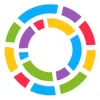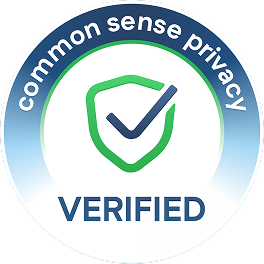Take a look inside 6 images
Blendspace
Pros: Incorporate materials from other teachers, plus the web, cloud storage, and your own device.
Cons: Not ideal as a stand-alone lesson delivery platform due to limited options for interaction, feedback, and assessment.
Bottom Line: It's a good tool for bringing together lots of multimedia resources, but teachers will need to be mindful of content quality and lesson flow.
You can use a free Blendspace account to create self-paced lessons to guide students through basic content. For instance, a middle school biology teacher could share a lesson about photosynthesis and upload links, images and videos, text, and short quizzes. If your students create accounts, they can design their own grids to review for a test, curate resources for a passion project, or create presentations to share with their peers. The discussion tool provides a place for students to share ideas and ask questions about the lesson. Looking to differentiate? Create a row of videos, a row of text, and a row of links to interactive tools, and let kids learn according to their preferred option. Alternatively, you can require kids to choose one from each row in order to add variety.
Blendspace differs from other user-created digital lesson platforms by connecting teachers to the TES library of resources. Take advantage of this vast library of resources, including free and paid teacher-created content to share with your students. You can also add instructions to keep students on track and encourage discussion with the sidebar chat. Just be sure to monitor student responses for relevance and appropriateness.
Other than the discussion tool, it's tough to know whether or not students are engaging with the resources. Students who struggle to learn independently will likely need additional support as they move through the lessons. You'll want to create opportunities for assessment along the way to ensure that students are grasping the material. Blendspace can be a useful addition to the classroom, but it doesn't replace direct instruction and will probably work best when used in conjunction with other learning management tools.
Blendspace is an easy-to-use multimedia lesson creation platform. Teachers can organize the content to create self-paced lessons or use it as a lesson resource library. Students access lessons with a link but must have Blendspace accounts in order to participate in discussions and submit quiz answers. Using a drag-and-drop gridded interface, teachers can search for and add videos, text, images, quizzes, and files from their computers or cloud drives. Teachers also have access to the TES lesson resource library. Teachers must provide students with a class code; they can then log in with Google or create an account. Students can also use their accounts to create their own lesson collections.
It can be simple to create and share lessons, and a carefully curated lesson has great potential to guide student learning whether kids are working remotely or learning in a classroom setting. However, teachers who already have access to a top-notch learning management system like Google Classroom probably won't find Blendspace very useful, unless they really like using resources from the TES library.
Teachers will need to think carefully about instructional design when creating lessons. It can be tempting to just drag a bunch of resources onto a grid and ask students to work independently, but without opportunities to process and reflect on the resources, kids will be left to make sense of the material on their own. The same goes for students: If teachers are asking them to create their own learning grids, teachers will need to teach students design principles and information literacy concepts first. Otherwise, they may cobble together online content without considering the audience or learning much about the topic. Also, when students are choosing media, there's no education filter turned on for videos or images, so depending on the search term, inappropriate content may show up on the list of choices. Be aware that ads will appear on students' screens.
















